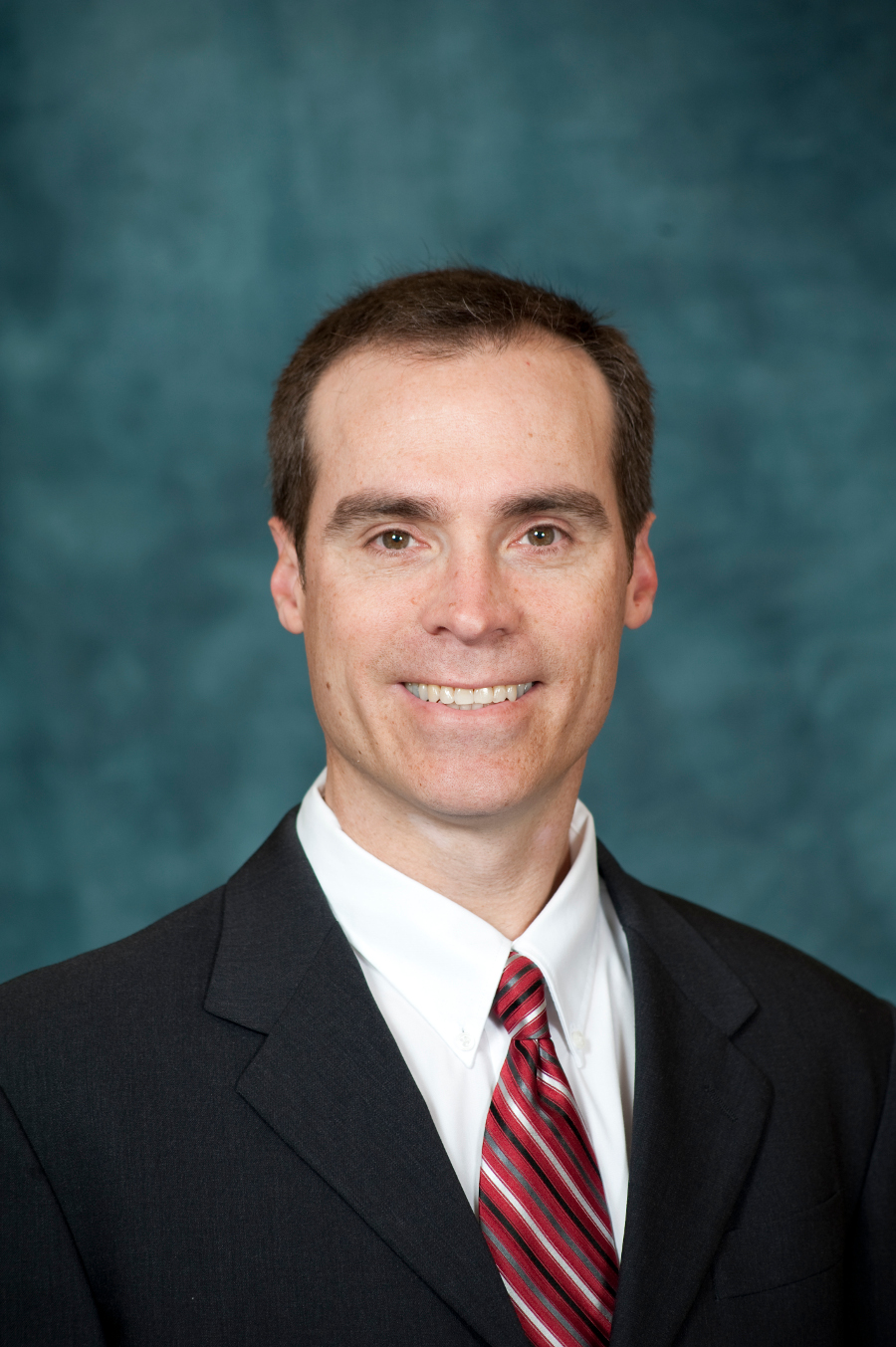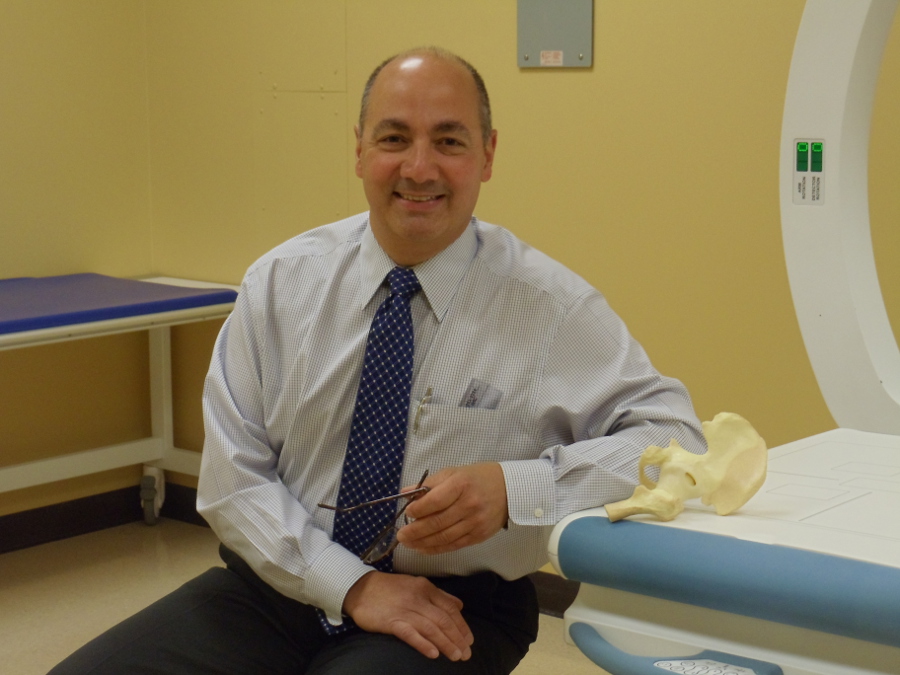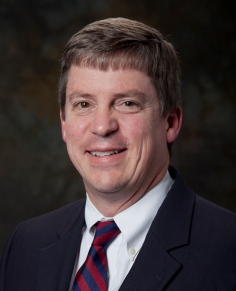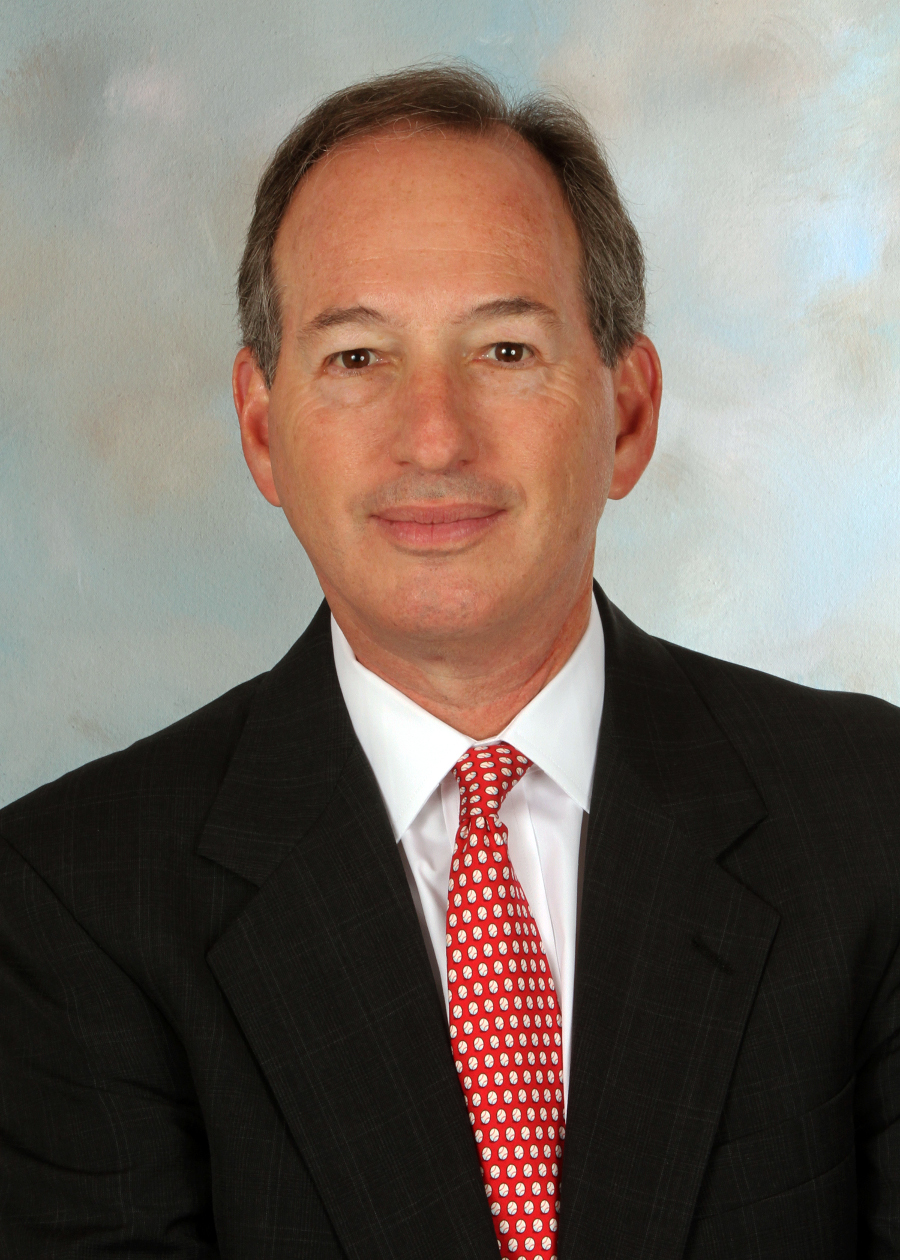Four orthopedic surgeons discuss issues related to improving profitability at orthopedic-driven ambulatory surgery centers and what needs to change in the ASC industry as a whole to improve profitability.
Question: What are some of the biggest threats to maintaining a financially healthy orthopedic-driven ASC today?
Tim Petsche, MD, Medical Director, Fox Valley Orthopedic Ambulatory Surgery Center, Geneva, Ill.: The most significant threat is the cost of orthopedic implants. The hardware we use is expensive. The other big threat is hospitals buying up the practices of primary care physicians and persuading all those physicians to send referrals to the hospital outpatient department, so more money goes towards the hospital system.
Charles Bush-Joseph, MD, Orthopedic Surgeon, Midwest Orthopaedics at Rush, Chicago: There are three major concerns we have. No. 1 is the continued downward pressure on reimbursement for patient care [that] is a rising cost environment. No. 2 is the escalating cost for implants and devices that take ever larger portions of the facility expense. No. 3 is the development of narrow networks based on price that limit patient choice and quality. Certainly the accountable care organization model of care is to find efficiencies and take waste out of the system, however, this leads to a defacto rationing of care in the orthopedic environment.
environment. No. 2 is the escalating cost for implants and devices that take ever larger portions of the facility expense. No. 3 is the development of narrow networks based on price that limit patient choice and quality. Certainly the accountable care organization model of care is to find efficiencies and take waste out of the system, however, this leads to a defacto rationing of care in the orthopedic environment.

Hadley Callaway, MD, Orthopedic Surgeon, Raleigh (N.C.) Orthopaedic Surgery Center, a joint venture of Rex Healthcare and Raleigh Orthopaedic Clinic: Our biggest fear is being excluded from the network. Although orthopedic ASCs often have the lowest costs and best outcomes, they have less negotiating leverage with insurers compared to large hospital systems. As patients are driven into narrow networks and ACOs, they may lose the choice to go to a specialized orthopedic ASC. The ASC is small and can easily be excluded from the narrow network, especially if the larger hospital decides to take on financial risk for population management.
Even a small difference in copays or deductibles can dramatically affect our potential patients. We learned from the "tiering" insurance process that the expensive hospital systems can use their market share leverage to stay in "tier 1." In contrast, the independent ASC is forced to give a double discount to the insurance carrier to remain tier 1. Patients won't pay the higher copays and deductibles to go to a tier 2 facility. Also they mistakenly believe that a tier 2 facility provides lower quality, which is often not true.
Q: What are some of the important considerations for orthopedic ASCs to improve profitability?
 Michael Redler, MD, The Orthopaedic & Sports Medicine Center, Trumbull, Conn.: One of the biggest things that needs to be considered to maintain a profitable ASC is the ability to analyze your true costs for every single case, which includes what type and how many implants are being used. You need to contain those costs.
Michael Redler, MD, The Orthopaedic & Sports Medicine Center, Trumbull, Conn.: One of the biggest things that needs to be considered to maintain a profitable ASC is the ability to analyze your true costs for every single case, which includes what type and how many implants are being used. You need to contain those costs.
There are many ways to do this. You could comb down the number of different companies that supply implants to your surgery center — standardize your products. Or if you have a case that is a Medicare case or some other case that requires implants that are not covered, these cases may not be suitable for your ASC.
Q: What are some innovative strategies that orthopedic-driven ASCs can use to overcome roadblocks and increase profitability?
Dr. Petsche: We've tried to emphasize improving our efficiency and we now run the ASC only four days a week. When we ran it five days a week, we were at about 70 percent utilization, but at four days a week the center is at 90 percent utilization. By running the center less frequently we have improved efficiency.
Also, for high volume cases, we schedule one surgeon to two operating rooms. When the surgeon completes a procedure in one room, he or she can leave and talk to the family, while the next patient is brought to the second OR and prepped for surgery. Then the surgeon can go to the second OR and immediately begin the procedure. There is no time wasted.
Q: How can ASCs tackle the issue of high implant costs?
Dr. Redler: I think that you need to have great communication between the orthopedic medical staff, director of nursing and the companies that provide the implants. This way the surgery center can achieve the best price point for implants. But you have to be willing to walk away from a device company that is unwilling to meet you half way in terms of negotiation.
Dr. Callaway: It is hard to limit the surgeons' choice of implants without driving away their cases. That is one of our biggest struggles in holding down costs. We get the surgeons together to talk about the pros and cons of each implant. Sometimes they will decide that the cheaper implant is just as good, after all.
Dr. Petsche: The biggest thing surgery centers overlook is the cost of implants and the money that can be saved from negotiations. If multiple companies have products that are comparable, we try to get them to compete with each other. This drives the prices down. Once you have multiple bids, pick the best one. Of course, this is only appropriate if the implants are all comparably good in terms of patient safety and outcomes.
Q: Are there financial areas that ASCs overlook that prevent them from increasing profitability?
Dr. Redler: One of the most important aspects is the importance of the marriage between orthopedics and anesthesia. It is well documented that the most cost efficient case for an ASC is one in which the patient has had a great outcome but has spent the least amount of time at the center. If you have a patient in pain and nauseated, they can't leave and this increases costs at the center.
This is a much less obvious increased cost of case. You need anesthesia department adept at performing regional anesthesia techniques. These patients are much less sedated and much less nauseated. Hence, the level of patient satisfaction is high. These patients are going home sooner, happier and at a lower cost-per-case to the surgical center.
Dr. Bush-Joseph: Centers want to maximize case revenue volume and they cherry pick the highest paying cases at the expense of volume. But surgeons don't line their cases up like that. They have a mix of different types of cases on any given day — low paying, medium paying and high paying. We try and maximize surgeon throughput even at the risk of including lower paying cases at the center. This engenders physician loyalty and a sense of aligned interests.
Dr. Callaway: The long acting local anesthetic Exparel offers great potential for pain management after ASC surgery. We think it will allow more joint replacements to move to outpatient facilities. The ASC will have to monitor its use; however, to make sure this drug is not overused for less painful procedures.
We find patients are willing to pay for extras, such as cryotherapy. Although we sell them at cost now, they could be a potential source of income in the future.
Q: Are there changes that need to be made in the ASC industry as a whole to allow orthopedic-driven ASCs to increase profitability?
Dr. Petsche: I think insurance companies need to understand that ASCs offer the highest value possible for the dollar — we offer the most efficient procedures and good outcomes. I can't understand why this hasn't happened yet.
We keep waiting for insurance companies to recognize the value that ASCs provide and the cost savings. But insurance companies don't do anything to incentivize the patient. Many procedures done at the hospital can be done at ASCs but many insurance companies don't pay for procedures done at ASCs.
Dr. Bush-Joseph: I feel that ASCs have to get to more transparent about pricing and flexible in pricing. ASCs need to have the ability to accommodate the out-of-network patient or self-pay patient in a transparent way. The ability to sell both price and quality are critical.
Dr. Callaway: Perhaps better integration of the ASC software with other clinical systems would help. Also more official support — guidelines, accreditation, etc. — for outpatient total joint programs would be helpful.
Q: Looking ahead, do you think the future is bright or dark for orthopedic-driven ASCs?
Dr. Redler: The future for orthopedic cases at ASCs is a bright one and one that will take on increasing importance in the overall performance of a surgical center. We have been able to increase the types of cases being done at surgery centers, including ACDFs, lumbar laminectomies and uni-knees.
Dr. Bush-Joseph: Surgery centers need to think carefully about aligning with hospital systems or health plans. A surgery center that tried to function as a purely outside player is not a good long-term strategy.
ASCs provide higher levels of care in a cost effective manner but independent ASCs are being forced to align or are being forced out of the market and how that plays out will be interesting.
Dr. Callaway: Advances in anesthesia and surgical techniques will continue to drive orthopedic cases to ASCs. The future prospects of orthopedic ASCs are good.
Dr. James Andrews Performs Elbow Surgery on Pittsburgh Pirate Kyle McPherson
Dr. Tariq Hussain Joins UHS Orthopedics-Norwich
Question: What are some of the biggest threats to maintaining a financially healthy orthopedic-driven ASC today?

Tim Petsche, MD, Medical Director, Fox Valley Orthopedic Ambulatory Surgery Center, Geneva, Ill.: The most significant threat is the cost of orthopedic implants. The hardware we use is expensive. The other big threat is hospitals buying up the practices of primary care physicians and persuading all those physicians to send referrals to the hospital outpatient department, so more money goes towards the hospital system.
Charles Bush-Joseph, MD, Orthopedic Surgeon, Midwest Orthopaedics at Rush, Chicago: There are three major concerns we have. No. 1 is the continued downward pressure on reimbursement for patient care [that] is a rising cost
 environment. No. 2 is the escalating cost for implants and devices that take ever larger portions of the facility expense. No. 3 is the development of narrow networks based on price that limit patient choice and quality. Certainly the accountable care organization model of care is to find efficiencies and take waste out of the system, however, this leads to a defacto rationing of care in the orthopedic environment.
environment. No. 2 is the escalating cost for implants and devices that take ever larger portions of the facility expense. No. 3 is the development of narrow networks based on price that limit patient choice and quality. Certainly the accountable care organization model of care is to find efficiencies and take waste out of the system, however, this leads to a defacto rationing of care in the orthopedic environment.
Hadley Callaway, MD, Orthopedic Surgeon, Raleigh (N.C.) Orthopaedic Surgery Center, a joint venture of Rex Healthcare and Raleigh Orthopaedic Clinic: Our biggest fear is being excluded from the network. Although orthopedic ASCs often have the lowest costs and best outcomes, they have less negotiating leverage with insurers compared to large hospital systems. As patients are driven into narrow networks and ACOs, they may lose the choice to go to a specialized orthopedic ASC. The ASC is small and can easily be excluded from the narrow network, especially if the larger hospital decides to take on financial risk for population management.
Even a small difference in copays or deductibles can dramatically affect our potential patients. We learned from the "tiering" insurance process that the expensive hospital systems can use their market share leverage to stay in "tier 1." In contrast, the independent ASC is forced to give a double discount to the insurance carrier to remain tier 1. Patients won't pay the higher copays and deductibles to go to a tier 2 facility. Also they mistakenly believe that a tier 2 facility provides lower quality, which is often not true.
Q: What are some of the important considerations for orthopedic ASCs to improve profitability?
 Michael Redler, MD, The Orthopaedic & Sports Medicine Center, Trumbull, Conn.: One of the biggest things that needs to be considered to maintain a profitable ASC is the ability to analyze your true costs for every single case, which includes what type and how many implants are being used. You need to contain those costs.
Michael Redler, MD, The Orthopaedic & Sports Medicine Center, Trumbull, Conn.: One of the biggest things that needs to be considered to maintain a profitable ASC is the ability to analyze your true costs for every single case, which includes what type and how many implants are being used. You need to contain those costs.There are many ways to do this. You could comb down the number of different companies that supply implants to your surgery center — standardize your products. Or if you have a case that is a Medicare case or some other case that requires implants that are not covered, these cases may not be suitable for your ASC.
Q: What are some innovative strategies that orthopedic-driven ASCs can use to overcome roadblocks and increase profitability?
Dr. Petsche: We've tried to emphasize improving our efficiency and we now run the ASC only four days a week. When we ran it five days a week, we were at about 70 percent utilization, but at four days a week the center is at 90 percent utilization. By running the center less frequently we have improved efficiency.
Also, for high volume cases, we schedule one surgeon to two operating rooms. When the surgeon completes a procedure in one room, he or she can leave and talk to the family, while the next patient is brought to the second OR and prepped for surgery. Then the surgeon can go to the second OR and immediately begin the procedure. There is no time wasted.
Q: How can ASCs tackle the issue of high implant costs?
Dr. Redler: I think that you need to have great communication between the orthopedic medical staff, director of nursing and the companies that provide the implants. This way the surgery center can achieve the best price point for implants. But you have to be willing to walk away from a device company that is unwilling to meet you half way in terms of negotiation.
Dr. Callaway: It is hard to limit the surgeons' choice of implants without driving away their cases. That is one of our biggest struggles in holding down costs. We get the surgeons together to talk about the pros and cons of each implant. Sometimes they will decide that the cheaper implant is just as good, after all.
Dr. Petsche: The biggest thing surgery centers overlook is the cost of implants and the money that can be saved from negotiations. If multiple companies have products that are comparable, we try to get them to compete with each other. This drives the prices down. Once you have multiple bids, pick the best one. Of course, this is only appropriate if the implants are all comparably good in terms of patient safety and outcomes.
Q: Are there financial areas that ASCs overlook that prevent them from increasing profitability?
Dr. Redler: One of the most important aspects is the importance of the marriage between orthopedics and anesthesia. It is well documented that the most cost efficient case for an ASC is one in which the patient has had a great outcome but has spent the least amount of time at the center. If you have a patient in pain and nauseated, they can't leave and this increases costs at the center.
This is a much less obvious increased cost of case. You need anesthesia department adept at performing regional anesthesia techniques. These patients are much less sedated and much less nauseated. Hence, the level of patient satisfaction is high. These patients are going home sooner, happier and at a lower cost-per-case to the surgical center.
Dr. Bush-Joseph: Centers want to maximize case revenue volume and they cherry pick the highest paying cases at the expense of volume. But surgeons don't line their cases up like that. They have a mix of different types of cases on any given day — low paying, medium paying and high paying. We try and maximize surgeon throughput even at the risk of including lower paying cases at the center. This engenders physician loyalty and a sense of aligned interests.
Dr. Callaway: The long acting local anesthetic Exparel offers great potential for pain management after ASC surgery. We think it will allow more joint replacements to move to outpatient facilities. The ASC will have to monitor its use; however, to make sure this drug is not overused for less painful procedures.
We find patients are willing to pay for extras, such as cryotherapy. Although we sell them at cost now, they could be a potential source of income in the future.
Q: Are there changes that need to be made in the ASC industry as a whole to allow orthopedic-driven ASCs to increase profitability?
Dr. Petsche: I think insurance companies need to understand that ASCs offer the highest value possible for the dollar — we offer the most efficient procedures and good outcomes. I can't understand why this hasn't happened yet.
We keep waiting for insurance companies to recognize the value that ASCs provide and the cost savings. But insurance companies don't do anything to incentivize the patient. Many procedures done at the hospital can be done at ASCs but many insurance companies don't pay for procedures done at ASCs.
Dr. Bush-Joseph: I feel that ASCs have to get to more transparent about pricing and flexible in pricing. ASCs need to have the ability to accommodate the out-of-network patient or self-pay patient in a transparent way. The ability to sell both price and quality are critical.
Dr. Callaway: Perhaps better integration of the ASC software with other clinical systems would help. Also more official support — guidelines, accreditation, etc. — for outpatient total joint programs would be helpful.
Q: Looking ahead, do you think the future is bright or dark for orthopedic-driven ASCs?
Dr. Redler: The future for orthopedic cases at ASCs is a bright one and one that will take on increasing importance in the overall performance of a surgical center. We have been able to increase the types of cases being done at surgery centers, including ACDFs, lumbar laminectomies and uni-knees.
Dr. Bush-Joseph: Surgery centers need to think carefully about aligning with hospital systems or health plans. A surgery center that tried to function as a purely outside player is not a good long-term strategy.
ASCs provide higher levels of care in a cost effective manner but independent ASCs are being forced to align or are being forced out of the market and how that plays out will be interesting.
Dr. Callaway: Advances in anesthesia and surgical techniques will continue to drive orthopedic cases to ASCs. The future prospects of orthopedic ASCs are good.
More Articles on Orthopedics:
University of Rochester Medical Center Receives 750k Gift for Orthopedic ResearchDr. James Andrews Performs Elbow Surgery on Pittsburgh Pirate Kyle McPherson
Dr. Tariq Hussain Joins UHS Orthopedics-Norwich
